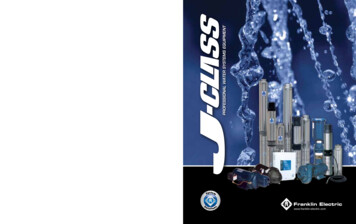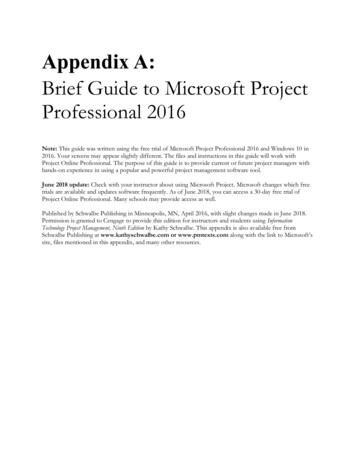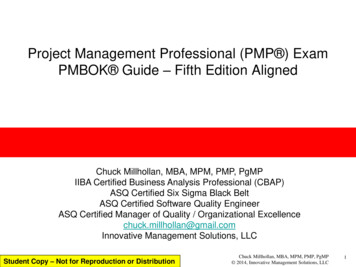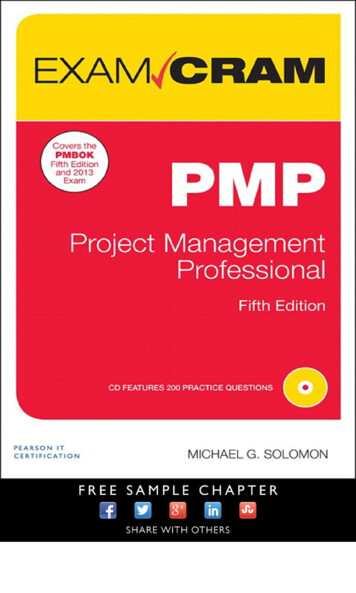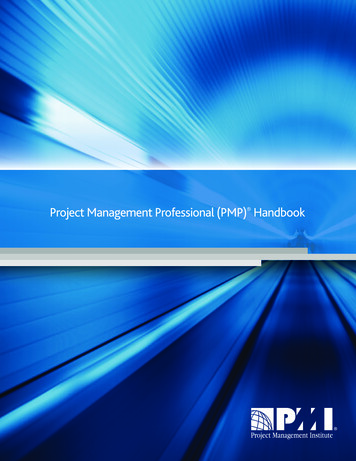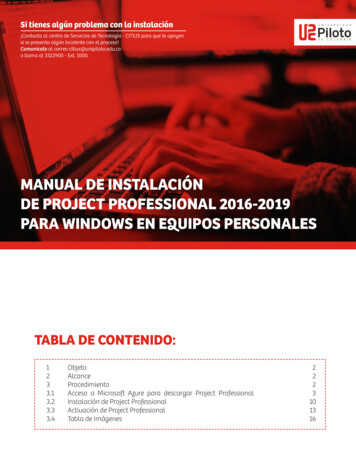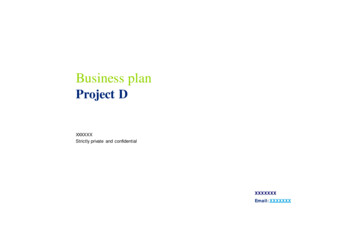
Transcription
Business planProject DXXXXXXStrictly private and confidentialXXXXXXXEmail: XXXXXXX
DisclaimerSectionPageDisclaimer2Executive Summary4Market Research7Business Model21Marketing Plan31Financial Projections40Founder Profile46Use of Proceeds48Business plan –Project D2 XXXX - Priv ate and Conf idential
DisclaimerDisclaimer This presentation has been prepared exclusively for the benefit and internal use of a qualified sophisticated global financier to whom it is directly addressed anddelivered. This presentation is for discussion purposes only and is incomplete without reference to, and should be viewed solely in conjunction with, the oralbriefing provided by XXXXXXX. Neither this presentation nor any of its contents may be used for any other purpose without the prior written consent ofXXXXXXX. The information in this presentation is based upon forecasted numbers provided in industry literature and our best estimates. These projections and estimationsreflect prevailing conditions and our views as of this date, all of which are accordingly subject to change. In preparing this presentation, we have relied upon and assumed, without independent verification, the accuracy and completeness of all information availablefrom public and private sources which were provided to us or which were otherwise reviewed by us. In addition, our analyses do not claim to be appraisals of theassets, or the valuation of any entity. XXXXXXX makes no representations as to the actual benefits which may be received in connection with a transaction northe legal, tax or accounting effects of consummating a transaction. A number of statements referenced in this presentation that have been granted, are forward-looking statements, and any statements that express or involvediscussions with respect to predictions, expectations, beliefs, plans, projections, objectives, and goals, assumption of future events or performance are notstatements of historical fact and may be "forward-looking statements.” Forward looking statements are based on expectations, estimates and projections at the time the statements are made that involve a number of risks anduncertainties which could cause actual results or events to differ materially from those presently anticipated. Forward-looking statements in this presentation maybe identified through the use of words such as "expects,” "will,” "anticipates,” "estimates,” "believes,” or statements indicating certain actions "may,” "could,” or"might" occur. Any person or entity seeking to make an investment in the company should not rely on the information set forth in this business plan as complete. Any person or entity seeking to make an investment in the company should not rely on the information set forth in this business plan as complete. There existssubstantial information with respect to the company, its business and its future prospects which are not set forth in the business plan and there exist a substantialnumber of risks associated with an investment in the company which are not set forth in this business plan. Any person or entity considering making an investment in the company must ensure that they avail themselves of all other information relating to the company, itsbusiness, and its financial projections, as well as all other information deemed necessary or desirable by such prospective, prior to any such investor making aninvestment in the company. Any prospective investors shall be required to represent to the company that, prior to making such investment, they have received from the company allinformation deemed necessary or desirable by them with respect to such investment and that such investor did not rely on any information set forth in thisbusiness plan in making any such investment. By accepting delivery of this plan, the recipient agrees to return this copy to the corporation at the address listed below if requested. Do not copy, fax, reproduce or distribute without written permission from XXXXXXX.Business plan –Project D3 XXXX - Priv ate and Conf idential
Executive SummarySectionPageDisclaimer2Executive Summary4Market Research7Business Model21Marketing Plan31Financial Projections40Founder Profile46Use of Proceeds48Business plan –Project D4 XXXX - Priv ate and Conf idential
Executive SummaryProject D is an app-powered, on-demand taxi car service provider for smart phones. The Company will charge a 5% commission for connectingcustomers with taxi drivers via a cutting-edge mobile application.Market analysisBusiness idea The personal transportation industry has undergone dramatic changesin recent years thanks to the introduction of application-based taxi andcar service hailing systems. Project D is an app-powered on-demand taxi car service provider for smart phones.The Company will charge a 5% commission for connecting customers with taxidrivers via a cutting-edge mobile application. New industry entrants, like UBER, have made structural changes toan old industry that functioned much the same way it did decades ago,with individuals in need of a cab having to either physically wave at ataxi at the street corner or call a local car service to reserve a car atleast half an hour prior to pickup time. The key competitive advantages is the Company’s ability to provide highly affordable(flat rate or subscriptions) personal transportation solutions. The Company will operate under brand Project D. Geographical focus: United States with planned international expansion. Target customers: individuals and corporate clients who frequently use taxi services Founder: XXXXXXX UBER and its competitors have made it possible to secure a car ortaxi from a smartphone from any location. This has revolutionized theindustry and opened the door to new market entrants.GoalsStrengths To become the leading rideshare services provider in the US Innovative solution at an affordable price To provide customers with the best-priced transportation solution Experience management team To retain clients through development of attractive loyalty programs Innovative marketing plan To offer fair remuneration to taxi drivers (5% from flat rate, significantlylower than UBER’s 20% commission) Scalable business Implement win-win strategy with potential partners (Hotel networks) Strategic approach in cooperation with taxi drivers To build and maintain relationships with wholesalers, retail networks(gas filling stations) To become operational by early 2016 To test the business model in 5 locations in year 1, with furthergeographical expansion to follow To achieve gross revenue – 163m in year 5Business plan – XXXX - Priv ate and Conf identialProject D5
Executive SummarysThe Company is seeking an investment of 5.1m to finance development of the mobile application and working capital for the first 24 months ofoperationsFinancialsIncrease in customer baseProjected Profit and Loss account Year 1Revenue3,000,000Year 2Year 3Year 461,172,884Year perating 0,000Net profit/(loss)1,000,0002,000,000(41,025,093) 439,422,923EBITDA margin, %-93%-1%27%33%35%Net profit margin, %-93%-1%19%23%24%500,000-Source management informationYear 1Year 2Year 3New customers adjusting on churn rateYear 4Year 5Customers (accumulated)Source: Management inf ormationInitial investmentsKPIsInitialinvestments, Initialinvestments, Key performance indicatorsItemItemCash Flow (1-5 years), 54,784,382Net Present Value (1-5 years)*, 29,490,578Internal rate of return, %Payback periodSoftwaredevelopmentRefurbishmentof the leased premisesMarketingexpensesPurchasesof goodsWorking capital replenishmentInvestments in working capitalTotal:Total:60%3.5 ,00090,0005,100,000200,000Source: Management informationSource: Management information*Discounted rate 10%So urce: M anagement info rmatio nBusiness plan –Project D6 XXXX - Priv ate and Conf idential
Market ResearchSectionPageDisclaimer2Executive Summary4Market Research7Business Model21Marketing Plan31Financial Projections40Founder Profile46Use of Proceeds48Business plan –Project D7 XXXX - Priv ate and Conf idential
Market ResearchGeneral OverviewThe personal transportation industry has undergone dramatic changes in recent years thanks to the introduction of applicationbased taxi and car service hailing systemsTaxi Industry: Pros & Cons Of UBER And Other E-Hail Apps The personal transportation industry has undergone dramaticchanges in recent years thanks to the introduction of applicationbased taxi and car service hailing systems. New industry entrants, like UBER, have made structural changesto an old industry that functioned much the same way it diddecades ago, with individuals in need of a cab having to eitherphysically wave at a taxi at the street corner or call a local carservice to reserve a car at least half an hour prior to pickup time. E-Hail apps allow users to rate their drivers’ performance, which quicklyweeds out unprofessional drivers. Consistently low customer ratingsusually lead to drivers being unable to find customers willing to pay fortheir services. In many cities and states like Los Angeles with less stringentregulations, average citizens can provide E-Hail services; this increasesthe number of drivers and cars available to customers. Drivers: Security is an important concern, both for E-Hail customers anddrivers. Because the transaction is cash-less, drivers need not worryabout unpaid fares; what is more, they need not carry any sizeableamount of cash on hand (this is what often entices those who rob taxidrivers). Unlike Yellow Cab taxi drivers who work by 12-hour shifts or black cardrivers who are scheduled by dispatch, UBER and other E-Hail driversenjoy greater freedom and flexibility. Drivers can log in and out of thesystem anytime and can choose to strategically allocate their workhours in a way that is most convenient (and rewarding) for them. Drivers can avoid the expensive taxi rental leases by using their ownvehicles, which means more profit for them. Also, since E-Hailapplications do away with dispatchers, drivers are spared the stresscaused by favoritism and office politics. Thanks to driver reviews, rude, aggressive and disruptive passengersare also weeded out the E-Hail network in the same way thatdiscourteous or unprofessional drivers are. Industry: UBER and its competitors occupy a very valuable space in thepersonal transportation market -- that is, between the traditional YellowCab taxi and the black car or limousine service.UBER and its competitors have made it possible to secure a caror taxi from a smartphone from any location. This hasrevolutionized the industry and opened the door to new marketentrants.PROs Customers: Instead of flagging down a taxi on the street,hopelessly praying for one to miraculously pass by their suburbanlocation, or calling and waiting half an hour for a car service, EHail apps allow users to hail a car from any location and have acar arrive within minutes. In major cities like New York where thetaxi industry is regulated, most cars are clean, well-maintained,late- model cars that are chauffeured by professional drivers withthe proper commercial insurance coverage.Because the passenger's credit card is linked to their E-Hailaccount, no cash changes hands, which means that paymentsdon't have to be processed immediately. For passengers withexpense accounts, an email receipt is sent—there’s no need tocollect and track paper receipts. Once drivers accept theassignment to transport passengers, passengers are able to tracktheir driver’s position and route and even communicate with theirdrivers if necessary.Business plan –Project D8 XXXX - Priv ate and Conf idential
Market ResearchGeneral OverviewThe personal transportation industry has undergone dramatic changes in recent years thanks to the introduction of applicationbased taxi and car service hailing systems. UBER provides most of the benefits that are offered byconventional taxi providers, while reducing (or eliminating) mostof the difficulties associated with them. They have made themarket much more competitive, increased the supply of cars anddrivers in busy markets, and dramatically decreased wait timesfor suburban customers. Drivers: Low prices can negatively impact drivers’ earnings. While theapplications are hailed by customers as user-friendly, it is important toremember that drivers are the ones providing the services. In major cities like New York, UBER encourages its drivers to purchaselate-model cars. In order to keep up appearances, some drivers rentcars weekly from third parties. They bear all of the costs associated withthe service (e.g. fuel and repairs). Initially, drivers used to rely on the surge prices to make up for low faresand infrequent trips. However, with the continued intake of new E-Haildrivers and increased price competition, drivers’ average earnings arebeing pushed downward. This means that drivers have to work longer hours to earn an incomecomparable to what they would have earned a year or two ago. Longerhours jeopardizes the safety of drivers and customers alike. These conditions, coupled with customer trip cancelations cannegatively impact drivers’ earnings and morale. Industry: Price competition can have destructive effects in anyindustry—no matter how indispensible that industry’s service is. E-Hailcustomers have come to expect first-class, limousine-style service forless than what they would pay for taxi services. UBER and its main rival,Lyft, are currently engaged in an intense battle to provide the cheapestand most convenient services possible.CONs Customers: There are very few downsides to E-Hail apps.Customers enjoy much greater access to safe and stylishtransportation. “Surge pricing” for UBER, or “primetime pricing”for its main compe
Business plan –Project D XXXX- Private and Confidential The Company is seeking an investment of 5.1m to finance development of the mobile application and working capital for the first 24 months of operations 6 Financials KPIs Executive Summary s,QLWLDOLQYHVWPHQWV Item Amount Refurbishment of the leased premises 60,000
